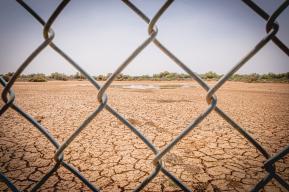For thousands of years, Indigenous Peoples have woven fire into the fabric of their existence, understanding that this destructive force could also be used as a powerful tool.
In the Guyana Shield region of South America, these communities have harnessed fire through intentional and precise burns to sculpt their surroundings, nurture their ecosystems, and enhance their livelihoods. By strategically reducing the accumulation of dry brush in specific areas such as grasslands prone to ignition, these controlled burns acted as a barrier and prevented fires from encroaching upon forests.
Traditional burnings were meticulously planned at specific times during the year, by reading nature’s cues including weather patterns, the behavior of animals and celestial alignments. They would leave behind ashes that would enhance soil fertility, and the diversified patchwork of fire scars and vegetation regrowth would sustain biodiversity and traditional ways of life. For generations, these indigenous communities were able to effectively use fire to maintain an ecological balance with their environment.
“Zero-fire policies”
When colonial powers first encountered indigenous peoples, they viewed many of their practices as primitive and to be eradicated – this included their intimate relationship with fire. The dominant approach became one of absolute fire suppression—a "zero fire policy" – with frequent blanket bans on its use. Instead of recognizing fire as a vital tool for controlled land management, it was treated as an uncontrollable force to be extinguished. In some regions intentional fire practices were even criminalized, and Indigenous communities often bore the brunt of such policies.
Many of our current fire policies have been shaped by colonial ideologies. Indigenous fire knowledge is still little understood by mainstream scientists, nature protection and fire management agencies, and traditional burning practices are at best considered negligible or insignificant, and at worst destructive and to be forbidden. The prevalent confusion between controlled burns and devastating wildfires has further complicated matters.

The climate crisis calls for a new model of fire management
Over time, the shortcomings of modern “zero fire policies” have become increasingly evident. Excluding of traditional fire practices, especially in fire-prone ecosystems such as tropical savannas, can lead to more intense and widespread fires due to the accumulation of unburned combustible materials over time. We also lose out on the numerous the benefits from controlled burnings, including improved soil quality and plant regrowth which fosters biodiversity.
More recently, a negative feedback loop has also developed: as global warming increases the occurrence and intensity of wildfires, these fires in turn emit greater amounts of greenhouse gases which exacerbate climate change.
Today the need to consider and integrate alternative models of fire management is urgent. Indigenous fire knowledge represents a significant and still relatively untapped potential for more effective and sustainable fire management strategies that can also mitigate the effects of climate change.
LINKS: a mandate to promote indigenous knowledge
UNESCO is uniquely positioned to gather this indigenous fire knowledge and push for its integration into national fire policies and global climate science. The Local and Indigenous Knowledge System programme (LINKS) works directly with and within indigenous communities all over the world to recognise and describe their ancestral knowledge systems though workshops, interviews and promoting indigenous-led research. By collaborating with academics and scientists to bridge the gap between traditional knowledge and scientific insights, LINKS is able to translate oral traditions into actionable policy recommendations at the state and regional level.
UNESCO’s global reach also allows LINKS to establish indigenous-to-indigenous knowledge sharing, so that a local community in Venezuela can exchange fire management strategies with individuals facing similar challenges in Botswana.
Much of this untapped knowledge is still held within specific indigenous languages or traditional storytelling, presenting yet another reason to keep them alive and fluent among younger generations. By leading the International Decade of Indigenous Languages (2022-2032), UNESCO is working to protect and promote threatened languages.

A tried and tested strategy that is gaining momentum
In parts of the world where indigenous fire management has been re-introduced, wildfires have seen a noticeable decline. Over the past decades northern Australia reintroduced aboriginal fire management and the number of destructive wildfires was cut by half. Meanwhile the south of the country, where such practices remained banned, continued to witness devastating blazes.
In Venezuela the Canaima National Park, inhabited by the indigenous Pémon people, lifted the ban on traditional burning practices in 2015, in light of an 11 year study that demonstrated the proven benefits for biodiversity and reducing wildfires.
The American state of California, which faces a yearly struggle with wildfires every summer, is also now turning to native American communities for assistance and considering the reintroduction of long-banned controlled burns.

Phone: +33 01 45 68 07 46

Phone: +33145680459









